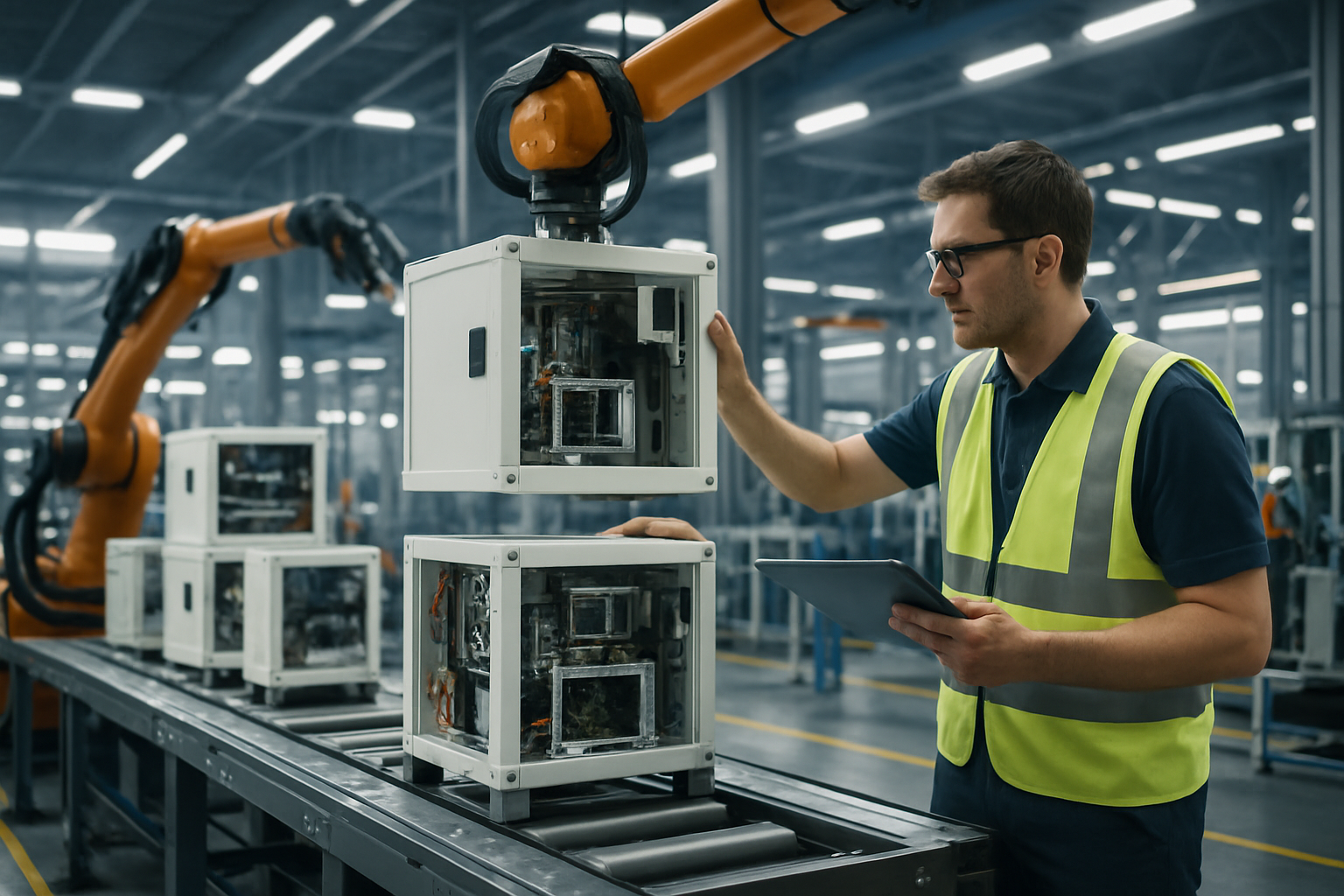Harnessing Collaborative Robotics for Enhanced Industrial Productivity
The synergy between human workers and robotic systems is revolutionizing industrial operations. As collaborative robotics gains traction, businesses are discovering new ways to boost productivity, improve safety, and streamline workflows. This innovative approach to automation is reshaping traditional manufacturing paradigms and opening doors to unprecedented operational efficiency.

Initially, cobots were limited in their capabilities and primarily used for simple, repetitive tasks. However, rapid advancements in sensor technology, artificial intelligence, and machine learning have dramatically expanded their potential applications. Today’s cobots can perform complex operations, adapt to changing environments, and even learn from their human counterparts.
Key Features of Collaborative Robots
What sets cobots apart from traditional industrial robots are their unique features designed for safe human interaction. These include:
-
Force-limiting technology: Cobots can detect unexpected forces and stop immediately to prevent injuries.
-
Lightweight and mobile design: Many cobots are easy to move and redeploy, offering flexibility in production layouts.
-
Intuitive programming interfaces: Operators can often program cobots through simple demonstrations or user-friendly interfaces, reducing the need for specialized coding skills.
-
Advanced sensors and vision systems: These allow cobots to perceive their environment and react accordingly, enhancing safety and precision.
-
Adaptability: Cobots can be quickly reprogrammed for different tasks, making them ideal for dynamic production environments.
Applications Across Industries
While initially adopted in manufacturing, collaborative robotics has found applications across various sectors:
-
Automotive: Cobots assist in assembly lines, quality control, and intricate tasks like wire harness installation.
-
Electronics: Precision assembly and testing of small components benefit from the steady hands of cobots.
-
Healthcare: In medical settings, cobots aid in surgery, rehabilitation, and patient care.
-
Logistics: Warehouses employ cobots for picking, packing, and inventory management.
-
Food and Beverage: Cobots handle packaging, palletizing, and even food preparation tasks.
Impact on Workforce and Productivity
The integration of cobots into industrial settings has far-reaching implications for the workforce and overall productivity:
-
Enhanced Safety: By taking on dangerous or ergonomically challenging tasks, cobots reduce workplace injuries and associated costs.
-
Increased Efficiency: Human-robot teams can often outperform either humans or robots working independently, leading to significant productivity gains.
-
Skill Development: Working alongside cobots encourages employees to develop new skills in robotics programming and maintenance.
-
Job Creation: While some fear job displacement, the cobot industry is creating new roles in robot design, integration, and maintenance.
-
Quality Improvement: The precision and consistency of cobots, combined with human oversight, often result in higher quality outputs.
Challenges and Considerations
Despite the numerous benefits, implementing collaborative robotics is not without challenges:
-
Initial Investment: The upfront costs of acquiring and integrating cobots can be significant, especially for smaller businesses.
-
Training Requirements: Employees need proper training to work effectively alongside cobots and maintain the systems.
-
Cultural Adaptation: Some workers may be hesitant to embrace robotic coworkers, necessitating change management strategies.
-
Safety Regulations: As a relatively new technology, safety standards and regulations for cobots are still evolving.
-
Technological Limitations: While advancing rapidly, cobots still have limitations in terms of payload capacity, speed, and complexity of tasks they can perform.
Implementing Collaborative Robotics: Best Practices
• Conduct a thorough needs assessment to identify processes that would benefit most from cobot integration
• Start with pilot projects to gain experience and demonstrate value before full-scale implementation
• Invest in comprehensive training programs for employees at all levels
• Regularly assess and optimize human-robot workflows to maximize efficiency
• Stay informed about advancements in cobot technology to leverage new capabilities
• Prioritize open communication with employees to address concerns and gather feedback
The integration of collaborative robotics into industrial operations marks a significant shift in how businesses approach automation and human-machine interaction. As the technology continues to evolve, we can expect to see even more innovative applications and increased adoption across various sectors. By carefully considering the benefits and challenges, businesses can leverage collaborative robotics to enhance productivity, improve worker safety, and gain a competitive edge in an increasingly automated world.





